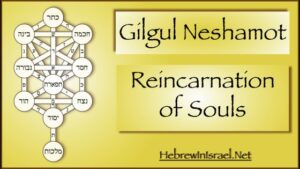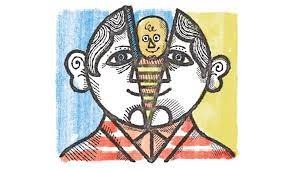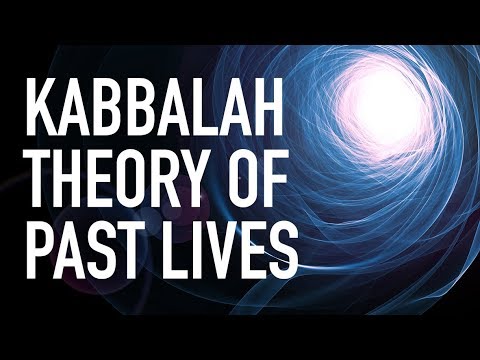Raboyseyee and Ladies,
Two mazel tov shout outs, both in the Schneider family. Earlier this morning, the heylige Ois attended the bris of Aharon Dov Hakohen Schneider, he the newborn son of Sara and Jeremy Schneider. Mazel tov to Sara and Jeremy, to Sara’s parents Shari and Adam Kaufman, to Carine and Bruce Schneider, to great grandparents Vivian Schneider, and Leo Lieberman (Carine’s father), and to both extended families. Welcome to the world Aharon Dov who is named after his grandfather, OBM, Dov Beer ben Shmuel Hakohen Schneider. You will surely be a source of much nachas to your entire family.
This past Sunday, the heylige Ois and eishes chayil were in attendance as Carine and Bruce Schneider walked their beautiful daughter Nicole down to the chuppah where she married David Solomon, he the son of Shevy and Eddie Solomon. After hearing David’s grandfather make a brocho under the chuppah with the very same inflection heard while growing up, the Ois was excited to learn that he was born in the very same village as the Ois’s father, OBM. Mazel tov the entire extended Schneider and Solomon families and may Nicole and David be the vehicle for much nachas over the coming decades.
———————————————————————————————————————
Reincarnation and the Trouble It May Have Caused
Do Jewish people believe in gilgul? In the what? Don’t get nervous as gilgul is but the Hebrew word for reincarnation. Do We? Are we permitted to believe? More on gilgul below, but let us begin here.

Welcome to Parshas Koirach, one of six named after a person of interest and one of four named after a goy. Did rich people like Koirach buy the name? It’s a week later and the Yiddin are ready for their next misadventure. By the time you finish reading this short but action packed -95 posuk- parsha, the RBSO will have flexed His muscles and wiped out kimat (nearly) another 15,000 of His chosen people. These were seemingly chosen for death. Our parsha describes yet another dark episode in the Midbar (wilderness) experience, just one of several; more to come. Unlike the Meraglim (spies) who were attracted to the super-sized fruit of the land, the Eygel caper, the incident where the Yiddin lusted for a good piece of meat -and who doesn’t, if you chap- Parshas Koirach opens with a rebellion, a mutiny mamish against the leadership of Moishe and Aharoin.
In this week’s episode of the ‘not quite ready for prime-time players,’ the Yiddin are restless, ober who can blame them? Their midbar stay had just been elongated, extended to 40 years in total and they were still in year two. Yikes! This week, they are not upset with the RBSO, instead a few hundred will be involved in a coup d’état, an attempted overthrow of Moishe and his brother Aharoin. But who led it?
The last time we saw Doson (Dathan), he ½ of the incorrigible Doson & Aviram team, brothers in fact, was in The Ten Commandments, a 1956 movie where Doson was played by Edward G. Robinson. The movie remains popular 66 years later. Let’s meet them one last time. Though this week’s parsha is named after Koirach – he was, after all, the main protagonist -or was he- Koirach did not act alone. He had co-conspirators for sure and the heylige Toirah shouts-out Doson and Aviram as his main cohorts by name. They will be shouted out again in Parshas Pinchas. Not all shout-outs are good! Seemingly, these guys had some history and were professional rabble rousers.
This is our twelfth time around the parsha and by now many of you know Koirach, his wife and the main story line. Koirach seems to have been somewhat jealous of Moishe, and suspected him of nepotism. Ober what was really bothering Koirach and his cohorts? We are taught that Koirach wasn’t all too pleased with his cousin Moishe for appointing Aharoin, Moishe’s eltere brider (older brother) to the post of kohain godol. Is that it? Koirach, known even back then for his enormous wealth, was a shtikel jealous of Aharoin? Was that the root cause of the rebellion? Or, was there something else lurking in the background? Maybe so.
And while we can kimat always count on Rashi to further illuminate, his first line this week is quite surprising: “this parsha is elucidated well in Medrish Tanchuma.” In plain English, Rashi is telling us that the story of Koirach and his rebellion cannot be fully understood from the text of the heylige Toirah; his actions were too nonsensical and there must be more. Let’s find more! Says the heylige Gemora azoy: One of Koirach’s complaints against his now less than favorite cousin Moishe, was that he (Moishe) was guilty of stealing his wife. Come again? Koirach accused Moishe of stealing his wife? Was Moishe double dipping? Is such an event even possible? And while we taka learned a few weeks back that Moishe separated from his own wife Tzipoira, and was maybe a shtikel lonely, nowhere did we learn -or even kler- that Moishe was efsher involved with another woman; say it’s not so please and oy vey. His cousin’s wife? Could such a rumor be emes? Chas v’sholom and banish the thought. The mere mention of the rumor is repugnant mamish, ober who is the Ois to argue with the heylige Gemora when they put forth such a potential conspiracy theory? And who are you to criticize the Ois for bringing down this Gemora? Ober what’s taka pshat? Why go there? Why put such chazerish machshovois (thoughts), ludicrous as they sound, into our minds?

Nu, let’s try to chap what took place and why Koirach accused Moishe of chapping what was his. For those who have a fascination with gilgulim (reincarnation), buckle down; this one is mamish a vilde myseh (wild story). Says the Arizal, he the great kabbalist whose mikveh has no hot water ad hayoim hazeh (until this very day), azoy: Moishe was a gilgul of Hevel, remember him? In plain English: Hevel was reincarnated. Do we Jews, especially of the orthodox variety, believe in reincarnation?

More on that below, ober let’s go veyter with the story as imagined by one of the most famous kabbalists of all time. Hevel made a brief appearance in Parshas Bereishis and was immediately disposed of by his jealous brother who felt the world wasn’t big enough for the two of them. He’s back- only this time as none other than Moishe Rabaynu. Veyter. Next we are taught that Koirach was a gilgul of Kayin, he the disgraced murderer of Hevel. Nu, halt kup (pay attention): for those who were daydreaming about meydlich (girls) or throwing spitballs across the room and not paying attention while in Yeshiva, here’s what happened back then. Both brothers brought korbonois (sacrifices) to the RBSO. The RBSO accepted Hevel’s and rejected Kayin’s.
Shoin! Kayin became enraged and killed his sibling in cold blood. Only one eye witness; the RBSO. The story continues: In order to procreate the world, both Kayin and Hevel were born with twin sisters, one for each of them. Is the RBSO great or what? Centuries before the shidduch crisis would emerge, the RBSO had a solution: people would merely marry their own sisters and erleydikt (issue solved). Grada in another version of the story, Kayin was born with one sister while Hevel was born with two. In that version, Kayin was jealous over Hevel’s second sister; he wanted her. Shoin: Hevel may have been the first to be killed over a woman, zicher not the last. Veyter. Eventually, but exactly when we are not told, the two sisters passed on and went back up to shomayim (heaven) for some well-deserved rest. Procreating the gantze velt can be tiring. Many years later they came back to earth punkt (exactly) when Yisroy and Paroy the minuvil were walking in the fields of Mitzrayim. And since this happened before organizations like Ohel were up and running, these two kind hearted individuals (Paroy and Yisroy), upon encountering these two girls nebech valgering (loitering) in the fields, took them in as foster children, liked them, and adopted them. Nu, avada you and I couldn’t make up such a story ober the people who wrote the heylige Gemora and the kabolo were mamish very creative and taka did write this myseh (story). What happened next? Paroy named his tuchter (daughter) Basyah (some say Bisya) and Yisroy named his tuchter Tzipoira. This Tzipoira, as the story goes, was the original wife of Hevel and also his twin sister, and now many generations later, became the wife of Moishe. She’s back!
And how is the gantze myseh, which requires a flowchart, and can give one a gizunta headache, relevant to Koirach being angry with his cousin Moishe? Pay attention: Koirach claimed that since he, as Kayin in an earlier life, killed Hevel, he should have to marry his brother’s wife through Yibum (Levirate marriage meaning based on the heylige Toirah azoy: … her brother-in-law shall take her as a wife… ( Deuteronomy 25:5) If a man dies without children, there is a mitzvah for his brother to marry the widow. This mitzvah is called yibum in Hebrew or levirate marriage in English). Therefore, he claimed that Tzipoira was really rightfully meant to be his wife. And why not? Don’t we always encourage murderers to marry their victims’ wives? Was Koirach the first ever progressive thinker? Veyter! And now you know why he was all upset with Moishe: Seemingly according to this very creative pshat, Moishe taka took his wife and according to the medrish, this explains the language in Possik #1 of the Parsha where it says azoy:
| Koirach the son of Yitzhar, the son of Kehos, the son of Levi took [himself to one side] along with Doson and Aviram, the sons of Eliaho and Oin the son of Peles descendants of Reuven. | א. וַיִּקַּח קֹרַח בֶּן יִצְהָר בֶּן קְהָת בֶּן לֵוִי וְדָתָן וַאֲבִירָם בְּנֵי אֱלִיאָב וְאוֹן בֶּן פֶּלֶת בְּנֵי רְאוּבֵן |
Seemingly what this means is that Koirach took exception to the fact that Moishe, besides laying down the laws of the RBSO, was also epes laying down with his wife, if you chap.
Now listen to how clever our rabbis of yore were, and how they so brilliantly wove the story together so that it mamish sounds plausible mamish. As if mamish happened. (As an aside, for those English majors who think the word above should be weaved and not wove, be aware that wove is a legitimate scrabble word.) All we have to do is believe it. Did this story really happen? Ver veyst but it’s avada possible, especially if the heylige Gemora and or kabolo says so; who are you to argue? Nu forget the parsha; it’s abundantly clear that many of you are mamish out of your keylim (minds) with desire, if you chap, to know more.
So where did Koirach go wrong with his accusations against Moishe, and why did he think that after murdering Hevel while he was Kayin in a previous life, that he was entitled to have his brother’s wife. Is murder rewarded? Shoin, let’s not too political. Does one get to enjoy the wife of the brother he just killed? Is this justice? Seemingly in Koirach’s twisted mind, though terribly misguided, efsher it was. Moreover, even those who chap the very complicated Yibum laws, would they have applied generations earlier or later? Oy vey! Ober raboyseyee, we must avada remember that the RBSO thankfully gives most of us second and third chances. Without those, many of you oisvorfs wouldn’t make it past Yom Kippur for chapping all year what you shouldn’t have. Kayin was no exception, neither Koirach.
Kayin’s jealousy stemmed from korbonis to the RBSO. Koirach was envious of Moishe and Aharoin because Aharoin was appointed the post of big Kihuna and was now in a position to bring the sacrificial offerings. Accordingly, the incidents are related. And to top it all off, it so happened that Koirach and his merry men were standing on the same ground mamish as did Kayin (also him) way back in the beginning of time. And how do we know this to be emes? Says the Mishna in Ovois: ten things that were created during twilight on erev shabbis. Among them was the mouth of the earth. When the RBSO punished Kayin for his sin he said “cursed are you from the earth that opened its mouth to receive the blood of your brother” (Bereishis 4:11).
Similarly in our Parsha when Koirach is swallowed up, the same terminology is used: “The earth opened its mouth and swallowed them, their houses, and all of their property” (Bamidbar 16:32). Koirach failed in his chance to rectify his wrongdoing, and was punished mida kineged mida (measure for measure).
When the RBSO asked Kayin about the murder in cold blood, we read these words: “What have you done? The blood of your brother is screaming to me from the earth” (Bereishis 4:10). The medrish tells us that until this day you can hear Koirach screaming beneath the mouth of the earth “Moishe emes v’soirosoy emes” (Moishe is truthful, and his Toirah is true).

Is the concept of gilgul (reincarnation) mamish something that Jews are to, or mamish believe in? Is this kosher? And the bottom line is azoy: this concept has been hotly debated over the centuries with many beards of all sizes and shapes on either side of the argument. The most famous kabbalist of them all, the heylige Arizal suggested that he was a gilgul of Saadia Gaon. Interestingly, on a video the Ois watched just the other day, Rabbi Twersky -one of them- pointed out the irony of this gilgul since Saadia Gaon had this to say about reincarnation: Gilgul is a foreign superstitious import. Despite all that, other famous rabbis accepted the concept and today it’s deeply embedded in our belief system. Does the RBSO mention reincarnation in the heylige Toirah? Not explicitly.

Shoin enough on Koirach and avada we all chap that every rabble rouser needs a few accomplices, and starring this week are two of Moishe’s nemeses, two of his oldest foes, Doson and Aviram. And in the blink of an eye, they, Koirach, Doson, and Aviram had assembled another 250 mitschleppers (tag- alongs) and shoin, a rebellion was born. Nu, you all know the rest: the RBSO eventually got fed up, and in order to protect Moishe’s leadership position, responded to Moishe’s call for an earthquake, and shoin, the gantza bande (entire crew) were swallowed up alive in efsher the world’s first ever earthquake, or at least the first we hear about one. Fartig: ois rebellion (it’s over)! Gone were Koirach, his eishes chayil who seemingly egged him on, Doson, Avirom, and the rest of the chevra. Is that emes? Maybe not: at least one Medrish tells us that although Koirach was chief rabble-rouser, he was not swallowed up by his rebbe, if you chap, or the quake. Instead, the RBSO let him live, though bereft of his wealth, family, friends, and supporters. According to this view, he did, however, die in another magayfo (yet another tragic incident) when the RBSO flexed His muscle and wiped-out thousands more. Is there mamish a view that Koirach was not the chief protagonist? Stay tuned!
And taka this year, we’ll take a better look at Doson and Aviram, two guys who had been wreaking havoc on Moishe and the Yiddin for many decades. Says the heylige Toirah (Bamidbar 16:4) azoy: when Moishe heard the remarks of Doson and Aviram, “he fell on his face”. Asks the heylige Gemora (Sanhedrin 110a): “What was it that Moishe heard?” What could Moishe have heard that shocked him to a point of falling on his face? By this time in his leadership, he had already experienced many unpleasant surprises from this group -of at times- seemingly ungrateful Yiddin. Moishe was no longer a newbie leader. Ober says the Gemora azoy: he heard that Doson and Aviram suspected him of having chapped (illicit relations) with married women, or maybe came close enough to chapping by allowing himself to be secluded privately with married women! OMG!!
Who were these guys? We first met them in Mitzrayim 60 years back. It was the day after Moishe killed a Mitzri (Egyptian) for beating up on one of the hapless Yiddin. Yes, it’s emes: Moishe witnessed a Mitzri beating on a Jew, and Moishe, now grown up, wacked the Mitzri. Fartig and erleydigt (matter settled). The medrish and others will weave together an amazing myseh. This very Mitzri minuvil chazir (swine) had, after feigning to be the husband of the poor Jew he was schmeissing, just had sexual relations (chapped) with his victim’s wife. He did what and with whom? Noch a mol (one more time): As the story goes, confirmed by Rashi and others, this Mitzri minuvil laid eyes on the wife of a Jew, desired her, summoned the Jew for an early morning work call, then snuck into her bed and had his way with her, if you chap, which he did. And to make matters worse, when the same Mitzri minuvil became suspicious that the husband may have found out what went down in his master suite, instead of apologizing profusely, the chazir beat the living daylights out of the hapless Jew proving once again that the best defense is a strong offense. As an aside, Rashi will tell us that the woman who was seemingly duped into believing that the Mitzri was her husband, was the very beautiful Shulamis Bas Divri who actually became impregnated from the encounter and whose son went on to cause some other trouble later in the midbar. As to which wife, even in total darkness, would not know the difference between her husband and a Mitzri, ver veyst. Shoin, this shrekliche myseh (horrifying story) didn’t sit too well with Moishe and he killed him. Ober what has all this to do with Doson and Aviram? The story continues.
The next day, Moishe encountered two Yiddin arguing and almost coming to blows. This was taka newsworthy because for the most part Yiddin don’t get into fisticuffs. Instead, they stop talking, ignore each other in shul, badmouth one another, or just sue in court. As an aside, when Yiddin really hate one another, they get even by inviting them to the wedding of their children, to sheva brochis, the aufruf, to the shabbis kallah and also to sholosh seudois. Who were these two Yiddin? Says the Midrash Tanchuma (Shemois:10): they were none other than Doson and Aviram, brothers-in-law. Moishe rebuked them calling Doson a rasha (wicked) for raising his hand against a fellow Jew. Ober, they shocked Moishe by referring to the incident of the previous day, they knew his secret. They said, “Are you going to kill us like you killed that Egyptian?” Seemingly, though Moishe looked in either direction and saw no one before whacking the Mitzri, these two guys knew. Was Mitzrayim, thousands of years back, the first country to have surveillance cameras? And before we answer that, from this story we can also finally visualize and efsher appreciate something the rebbes told us in yeshiva over and again. In their desperate attempts to correct errant behavior and get us to behave, they would warn us that the RBSO was recording our every move. The recording would be played after our passing and would come back to haunt us; oy vey! Each of our aveyrois will be replayed before we are sent off to hell where appropriate punishment will be meted out. Yikes!
Doson and Aviram ratted Moishe out to Paroy: word was out that Moishe killed an Egyptian. Paroy wanted Moishe dead. Ober Moishe escaped to either a country called Kush where he became king and married a black shiksa, or, he went to Midyan where he married Tzipoira, she the daughter of Yisroy, another shiksa. Which one did he taka marry? We don’t know. Depending on which medrish talks to you, he married either one or both, ver veyst. In any event, what we do know is that he did not arrive back to Mitzrayim until he was 80 years old meaning that this encounter with Doson and Aviram took place many decades back when Moishe was either 20, maybe a bit younger or older, again depending on which medrish talks to you. One will tell us that Moishe, after fleeing Mitzrayim first arrived to Midyan 47 years later and that he was 67 at the time. Where was Moishe for 47 years? Shoin, that for another day and another parsha.
The medrish (Shemois Rabbah 1:31) will tell us that what made Doson and Aviram’s chutzpah azoy grois (so big) was the fact that the name of the man whose wife the Mitzri had laid his eyes and himself on, if you chap, and whose life Moishe may have saved by intervening, was none other than Doson!
But wait, there’s more. When the RBSO or our rabbis don’t like someone, they are blamed for all the world’s ills. In fact, as we scroll back over some history during that time period, we find that Doson and Aviram are the blamed villains for a number of other misdeeds. Whenever and wherever there was trouble, their names pop up. Not necessarily in the heylige Toirah but it is clear that Rashi, the medrish and many others, did not like these two guys. Ober what specifically did they do that was so giferlich? And if it was giferlich, why didn’t the RBSO take them out? One medrish will tell us that Doson and Aviram were mamish on the inside of Egyptian politics, they had Paroy’s ear. Seemingly, when the Yiddin left Mitzrayim, these two guys, at least initially, stayed behind. Paroy consulted with them regarding his tactics to chase after the Yiddin and bring them back to slavery. Ober what were they still doing in Egypt after the Yiddin left? Shoin, that for another day. And if they were there, how and when did they leave and join the Yiddin over in the Midbar? Did they swim over later, ver veyst? But wait, there’s more!
Listen to this amazing pshat from the Ralbag who, maybe drawing inspiration and some hate towards these two from the Medrish Tanchuma, suggested azoy: The real instigators of the rebellion as described in great detail as our parsha opens, were Doson and Aviram and not Koirach. Koirach was just a pawn of the Doson and Aviram rebellion. Not necessarily a nice guy but not the lead villain. And he knows this how? Because in parshas Pinchas (Bamidbar 26:9-11), the rebellion is again recounted. The verses point out that Doson and Aviram were the ones who contended with Moishe and Aharoin from the congregation of Koirach. The posik then points out that Doson and Aviram were swallowed by the Earth along with Koirach. Says the Ralbag ”Since when it came to being swallowed, Doson and Aviram were mentioned first meaning before Koirach, it’s epes mashma (seemingly) they were the leaders of the rebellion.” Of-course not all agree with the Ralbag ober who are you to argue?
And the big question is azoy: why didn’t the RBSO dispose of these two troublemakers years earlier when they first appeared on the scene in parshas Shemois? Avada we all know that it’s a good thing when the RBSO likes you and zicher not so good – not good at all- when He doesn’t. Since parshas Bereishis, we have read stories of how the RBSO either killed or gave orders to kill other wisenheimers. Mostly they are gone in a flash. Some enter and exit the heylige Toirah in but a few verses. Eyr and Oinon withdrew prematurely, if you chap, and were dead pisukim later. More recently we briefly met the blasphemer and the wood gatherer. They too were gone from the narrative in an instant, and there were others. That being the case, shtelt-zich-di-shaylo (the question arises) azoy: Why then did the RBSO allow these two seemingly bad guys to continue their unabated bad behavior without consequences until this week? Why weren’t they killed during Makas Choishech (plague of total darkness) when, according to the medrish and other informed sources, whoever they are, other bad Yiddin died? Wasn’t that the time when bad guys and/or others not inclined to leave Mitzrayim were killed? Taka excellent kashas and if anyone has an answer, please submit. Is it possible that they either had a few zichusim (merits) or should we kler that the RBSO gave them, as He does many, multiple chances to get it right? Unfortunately they didn’t; most of us still can.
A gittin Choidesh Tamuz and a gitten Shabbis-
The Heylige Oisvorfer Ruv
Yitz Grossman
